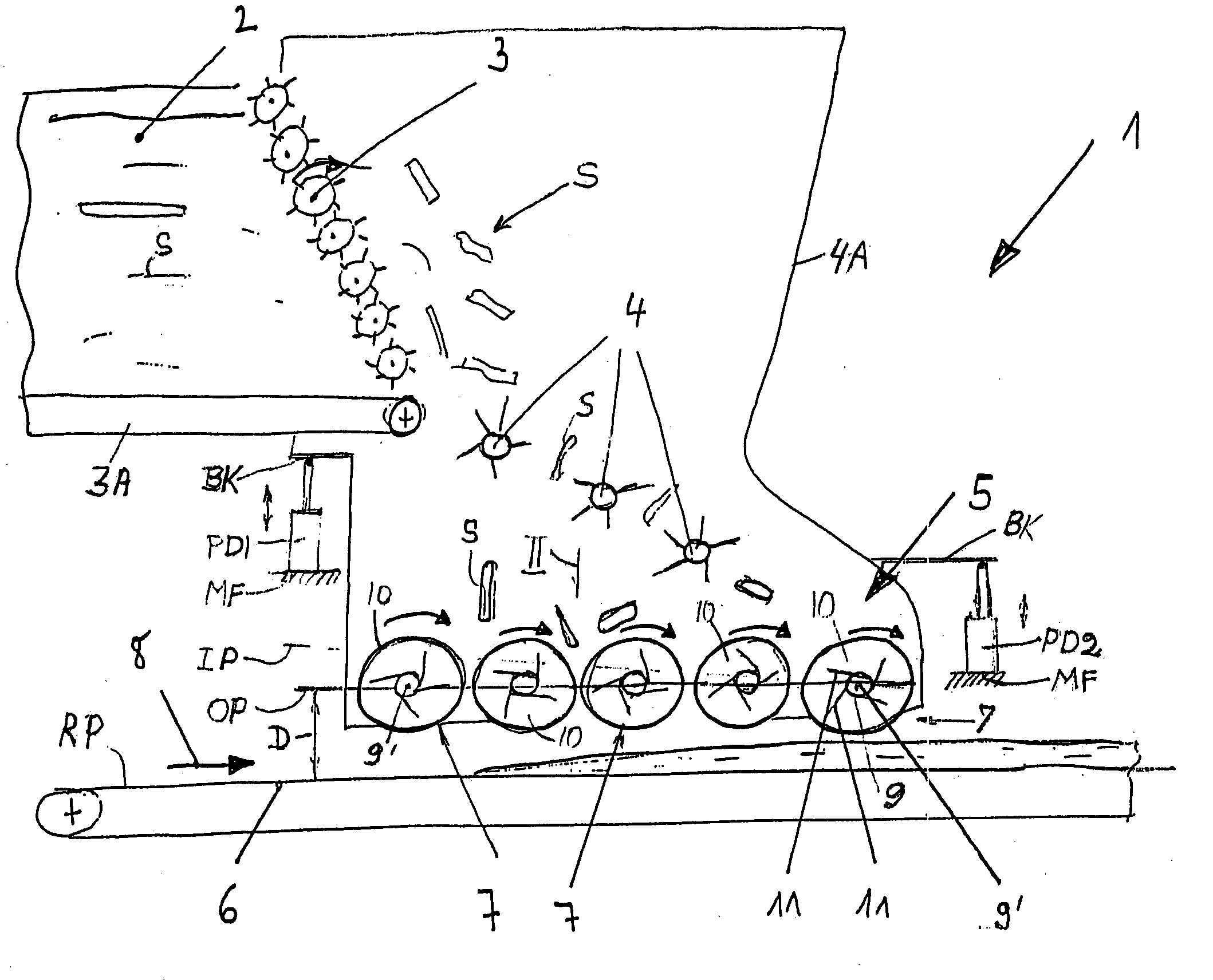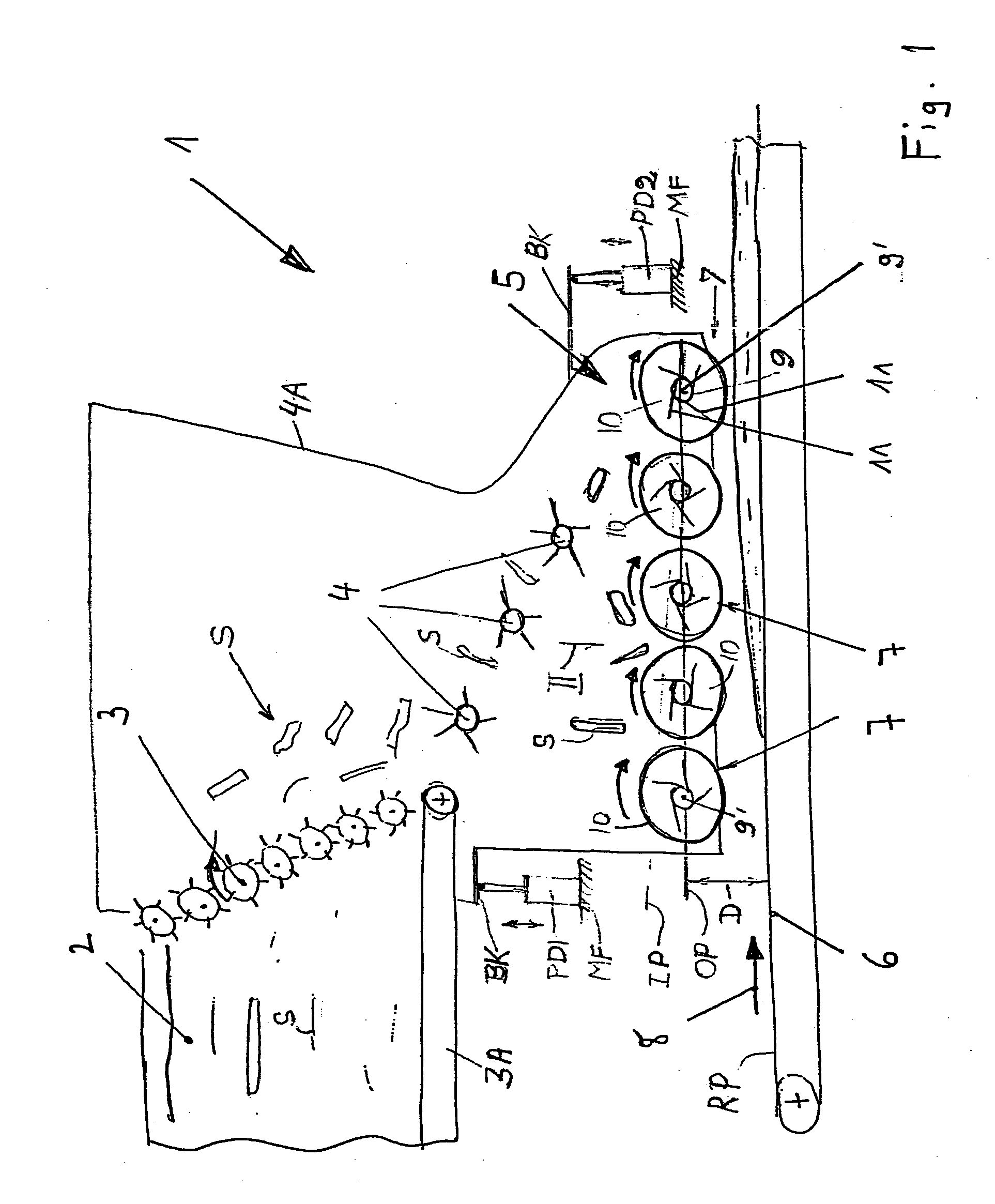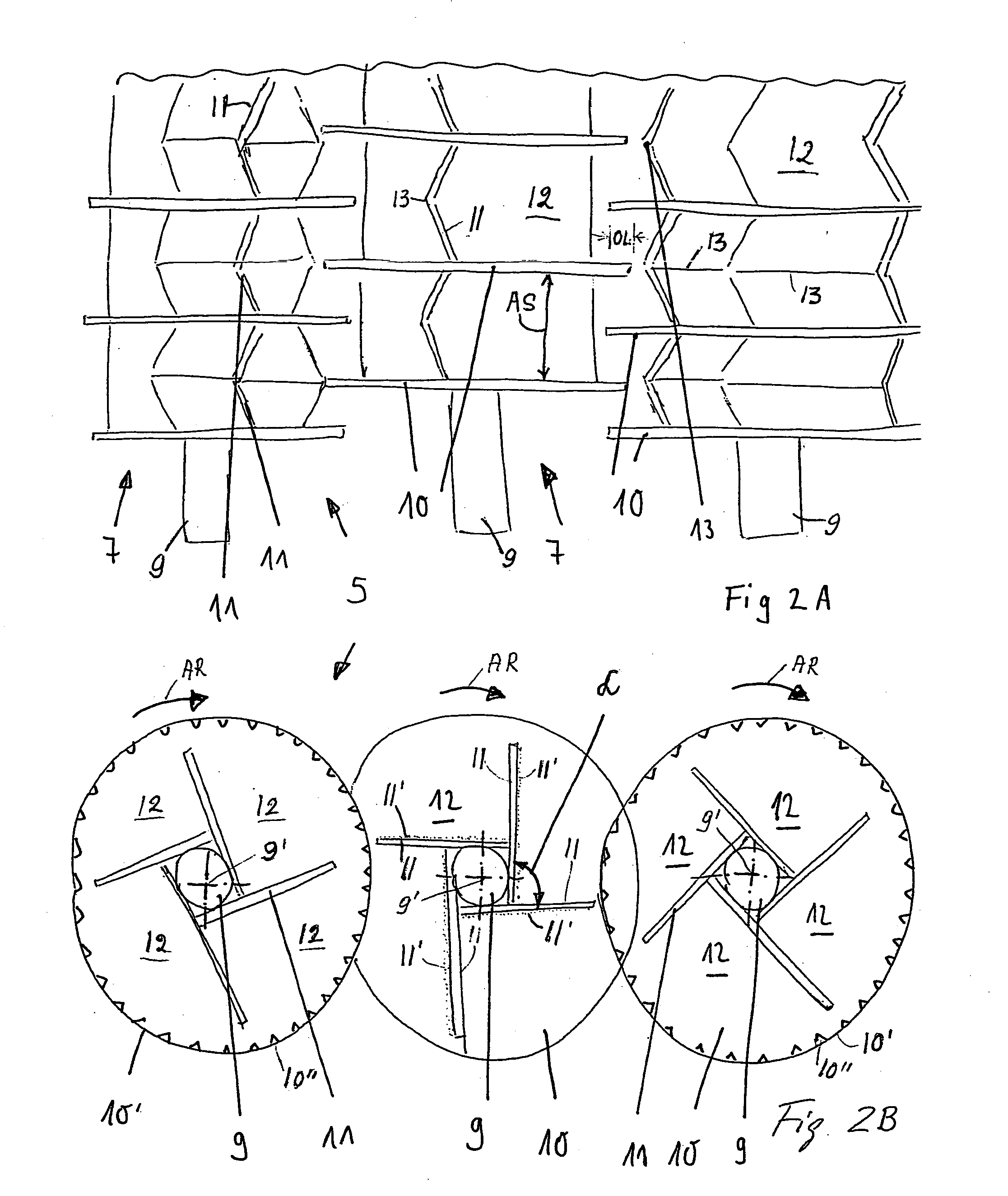Apparatus for longitudinally orienting elongated wood strands
a technology of elongated wood strands and orienters, which is applied in special profiling/shaping machines, flat surfacing machines, profiling/shaping machines, etc., can solve the problems of unwanted deviation of noticeably lower strength characteristics, etc., and achieve the effect of improving the longitudinal orientation and improving the longitudinal orientation of the wood strands
- Summary
- Abstract
- Description
- Claims
- Application Information
AI Technical Summary
Benefits of technology
Problems solved by technology
Method used
Image
Examples
Embodiment Construction
[0031] FIG. 1 shows schematically a side view of a panel molding station 1 with a wood strand supply bin 2 that functions as a dosing device. The output end of the supply bin 2 is formed by a strand discharge roller mechanism 3. Strands S are transported by a dosing conveyor 3A to the discharge roller mechanism 3. The strands S fall, by gravity, onto a strand distribution roller set 4 within a housing 4A. The roller set 4 distributes the strands S onto a strand alignment mechanism or head 5 that comprises a plurality of rotation shafts 9 having longitudinal rotational axes 9' arranged in parallel to one another. A molding conveyor belt 6 is positioned below the rotation shafts 9. The upper run of the molding conveyor belt 6 forms a reference plane RP.
[0032] As shown, the rotational shaft axes 9' are horizontally aligned in an orientation plane OP which is spaced from the reference plane RP by a distance D. A plurality of position adjustment devices PD1, PD2 support the housing 4A in...
PUM
 Login to View More
Login to View More Abstract
Description
Claims
Application Information
 Login to View More
Login to View More - R&D
- Intellectual Property
- Life Sciences
- Materials
- Tech Scout
- Unparalleled Data Quality
- Higher Quality Content
- 60% Fewer Hallucinations
Browse by: Latest US Patents, China's latest patents, Technical Efficacy Thesaurus, Application Domain, Technology Topic, Popular Technical Reports.
© 2025 PatSnap. All rights reserved.Legal|Privacy policy|Modern Slavery Act Transparency Statement|Sitemap|About US| Contact US: help@patsnap.com



